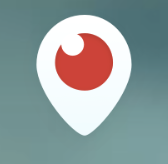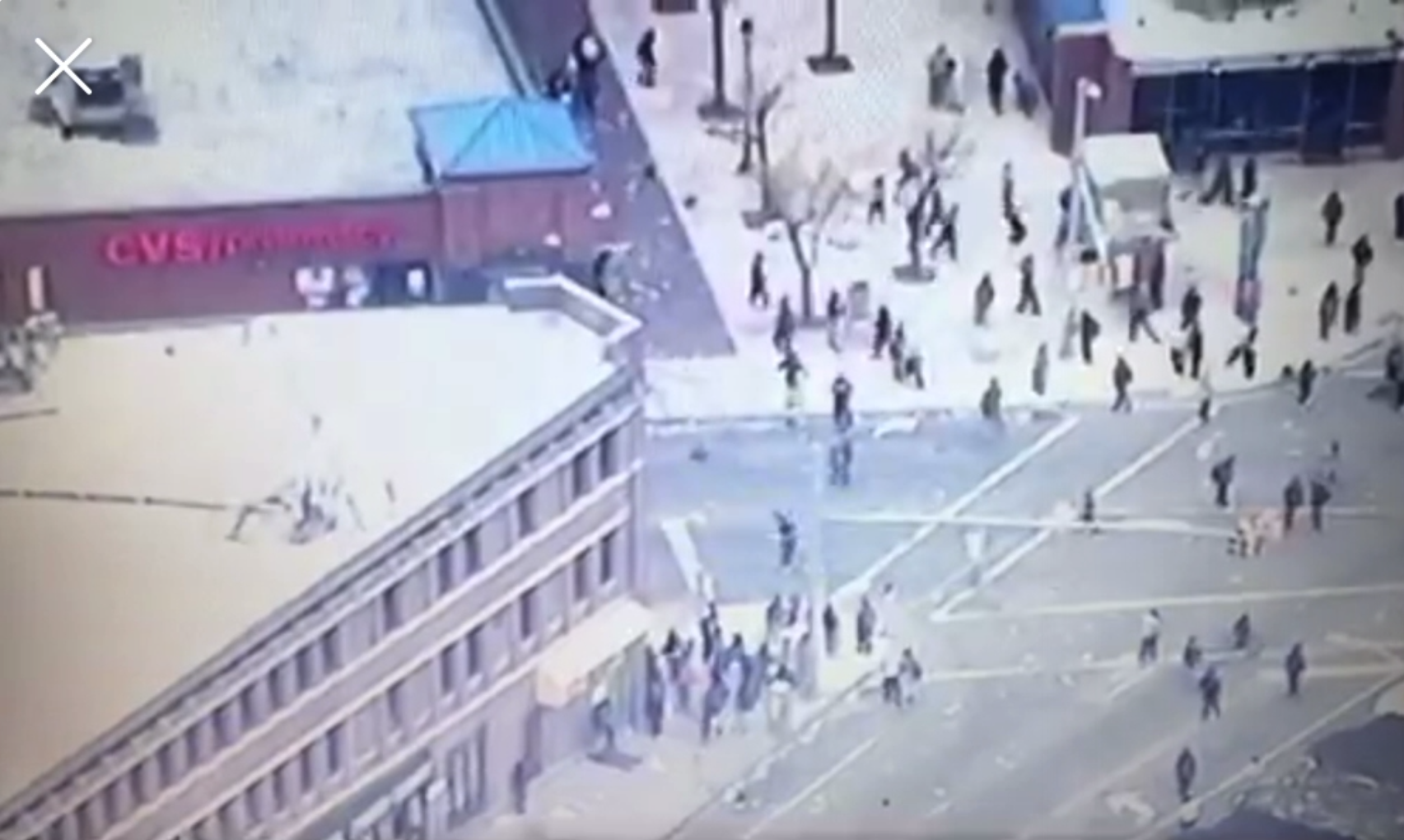____________
The revolution will not be televised, will not be televised
Will not be televised, will not be televised
The revolution will be no re-run brothers
The revolution will be live
-- Gil Scott-Heron
____________
The Rise of #Livejournalism
Social media has changed the way we engage with news. After the events of April 27 in Baltimore, however, it appears that the future may already be upon us. Enter the latest tool in journalists' arsenal: Periscope.

Live footage of the #Baltimore riots captured through Twitter's newly-acquired mobile app provide a glimpse of what lies beyond Twitter, Facebook, and YouTube for news.
As reports of widespread looting and civil unrest in Baltimore began to surface in social media and outlets like CNN, Twitter users asked why no one was using Periscope to capture the breaking developments:
Seriously though, I have yet to see *one* Periscope/Meerkat stream from Baltimore. Isn't that the point of those apps?
— Austen Allred (@AustenAllred) April 28, 2015
____________
Images vs. Context
Early in the evening, just before 6 p.m, live helicopter footage was being shown on television. It was a birds-eye view of what appeared to be chaos; images of a pharmacy being looted, people running in the streets, and a clear absence of law enforcement.

Live helicopter view of CVS area 4/27/15 at 5:58pm EST
____________

🚁
The problem with news coverage of a crisis event like Baltimore, however, is that people are shown what is happening but given little context around how and why.
🚨
Iconic images, dramatic headlines, and appeals from public officials only tell us so much. Pumped-up interpretations from news anchors can only carry a story so far.
And, of course, as soon as the unrest started to gain momentum, the backlash on social media was swift. News anchors called out Baltimore's mayor for her controversial statement about giving rioters a "space to destroy."
Twitter became its usual menagerie of opportunistic insults, cultural debates, and peacemaking appeals. The riots even gave a Baltimore sports executive a platform to vent about elitist politics and class warfare:
____________
The Ultimate Narrative: Live
Breaking news is a challenging form of journalism. The key to effective breaking news reporting, according to Poynter, a news education institute, is the journalist's ability to "understand [the] developing narrative [and] craft strategy to deliver it."
The connection between the developing narrative and an organizing (storytelling) strategy is 🔑.
There is a slack period when a news event develops. It's the time between when facts, details and footage are gathered and before the delivery strategy is finalized. Due to the use of Twitter and other real-time news platforms, this window is getting ever smaller.
In Baltimore's case, it was the hour-long period when the news agenda transformed from stories about the Freddie Gray "protests" into chaotic and violent images of "rioters" and police vehicles burning in the streets.
I'd like to call this moment the "golden hour" of breaking news.
👮
There will be no pictures of pigs
shooting down
Brothers on the instant replay
There will be no pictures of pigs
shooting down
Brothers on the instant replay
-- Gil Scott-Heron
____________
Periscope: Journalism's Golden Hour
In photography, the golden hour is all about timing. It's when the subjects in an image are depicted under warm, natural light. It's when shadows are the least visible, and the details of a scene are enhanced. Likewise, there is a window when journalists can capture the richest part of a breaking news story.
On April 27, with nightfall approaching, several journalists, armed only with their iPhones, wandered out in Baltimore. Through a sequence of expertly-documented live footage, including on-the-ground interviews, Guardian U.S. correspondent Paul Lewis used Periscope to "observe a community making sense of the destruction and chaos" in real-time.
In one of his first Periscope feeds, Lewis speaks with a local in front of a neighborhood corner store. The shop is being looted as they talk on camera. After a minute of conversation, he is threatened by a bystander to stop recording.
"I'm gettin' ready to beat you" is heard in the background.
📵
Lewis' live Periscope feed ends abruptly. For nearly five minutes, several hundred users remain active on his feed, exchanging messages and posting shell-shocked reactions about his fate.
"U just got knocked the f*** out," one user says.
"He was warned to get out," another types.
Thankfully, Lewis resurfaces a few minutes later, tweeting that he is fine. He starts another Periscope feed soon thereafter.
The #Baltimore events saw a number of journalists -- including the Telegraph's Raf Sanchez, D.C. Fox News 5's Alexandra Limon, @ABC7's Jay Korff and Baltimore Sun reporter Colin Campbell -- take their followers directly into the unfolding events using Periscope.
____________
Narrative vs. Proximity
While Periscope might be a powerful platform for journalists, how does it impact news audiences?
Esquire's Luke O'Neil believes that for apps like Periscope, the "proximity provided by technology is just an illusion":
The immersive experience of social media may do more harm than good in the long run ... Until the bricks whizz past our ears and the glass smashes on our own streets, most of us will never have any idea what we're talking about.
While the virtual can never be a direct substitute for the physical, tools like Periscope can help to capture the golden moments of breaking news by helping journalists establish an authentic developing narrative.
And the app itself is the delivery strategy.
In the case of Baltimore, Lewis' interview with people on the street gave the world real -- and often gritty -- stories that might have otherwise gone untold.
The narratives in this kind of news coverage exist in a time and space that, at least in the past, have been difficult to capture. It's not just social or real-time news, it's first-person, unedited, and it's out in the street.
Precious moments such as Lewis' interviews with community members display the power of #livejournalism to shape the prevailing narrative.
Listening to a resident explain why her neighborhood can't support a regular supermarket where people can buy groceries can be a transformative experience for viewers.
On search for tomorrow because black people
Will be in the street looking for a brighter day
✊
So, the revolution probably won't be televised, but can it be ...
Periscoped?
This post was originally featured on Medium.
This work is licensed under a Creative Commons Attribution-NoDerivatives 4.0 International License.


